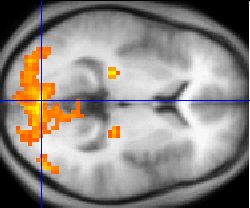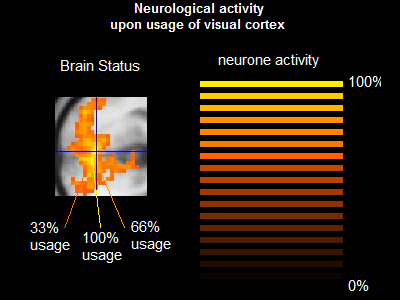It looks like you're using an Ad Blocker.
Please white-list or disable AboveTopSecret.com in your ad-blocking tool.
Thank you.
Some features of ATS will be disabled while you continue to use an ad-blocker.
share:
originally posted by: ImaFungi
You didnt attempt to answer my questions, and I do not believe in such woo as the "moon stops existing when I stop looking at it" NON SENSE.
Good morning.
I was not avoiding the question. I was trying to explain the difference between large objects and quantum objects. It proves to be harder than I expected.
Even if a large system (neurones) is composed of smaller systems (electrons), this does not mean that the properties for the small system apply for the large system. For instance, a sand castle. To me, what you are asking sounds something like this: If a sand castle is made of grains of sand, and given that all grains of sand are more or less spherical in shape, why aren't all sand castles spherical in shape? The answer being, of course, that all grains of sand are indeed more or less spherical in shape, but the castle is not in itself a grain of sand.
The mind is made of neurones. Neurones are not made of electrons - they are made of atoms. The quantum model is accurate to predict how the electron stay on orbit around the nucleon, how the electron can tunnel out, etc. This does not mean that the whole atom shares these quantum properties. The whole atom cannot orbit its very self, nor can the whole atom undergo quantum tunnelling and escape from itself. At one point, quantum mechanism cannot apply to an increasingly large system, only to its components. The individual components do obey quantum mechanics, but since a large system is not the individual component, classical mechanics takes over even though its parts are indeed ruled by quantum laws. Classical mechanics thus take precedence over the properties of the components.
In the end, the neurones in our brain (center of our mind) cannot exhibit quantum properties even though they contain components which do obey quantum properties, because the neurones are not the components by themselves.
originally posted by: tgidkp
this is an inaccurate misconception about quantum theory. The only reason that everyone says that it is true is because the mathematics have not yet been developed for hire systems. Most physicists and mathematicians seem to have no imagination. Not surprising.
All that needs to happen is too rescale the h-baconstant, which really is just a statistical standard deviation measure.
Perhaps you could be right. But I personally fail to see how stretching the maths of quantum so to include large systems will yield a useful model. Quantum mathematics will simply drown in zeros when the attempt to apply them for larger object will be made. Example: A planet cannot quantum tunnel. Only an elementary particle can. The probability for a planet to quantum tunnel will thus be equal to zero. This brings no useful information about the planet's orbital velocity, or its albedo. This is why we still need classical models.
Do not forget that the Planck constant is there for a reason - anything orders of magnitudes larger than the planck scale will stop following the Heisenberg Uncertainty Principle. Unlike an electron, a planet is large enough for our measurement to leave both its position and velocity unaffected. The Heisenberg Uncertainty Principle is no longer valid.
a reply to: swanne
well, any time we can observe a collective (coherent) behave in a unified manner as though the unified motions have a unique and singular identity, we are observing macro level quantum phenomena.
our world is absolutely full of relevant examples... it is everywhere! I have heard it referred to as a "Meme". a social thought form which appears to have its own volition and survival impulses. (Christianity for example)
but my favorite example is that of a flock of birds flying about while maintaining a definite boundary. the uncertainty principle in action. in this case, the model of quantum theory is a perfect match where the standardized unit of measurement is the bird +- vector distance between birds. this will allow us to model mathematically a phenomenon which is otherwise impossible to capture.
in the bird flock you can almost see exactly what the electron cloud around the atomic must look like.
it is also a useful model for coherent brain patterns being comprised of the firings of individual neurons. but importantly, the brain patterns can be identified with specific mental and emotional STATES.
anything which is described as a STATE function rather than obeying the standard laws of motion.
well, any time we can observe a collective (coherent) behave in a unified manner as though the unified motions have a unique and singular identity, we are observing macro level quantum phenomena.
our world is absolutely full of relevant examples... it is everywhere! I have heard it referred to as a "Meme". a social thought form which appears to have its own volition and survival impulses. (Christianity for example)
but my favorite example is that of a flock of birds flying about while maintaining a definite boundary. the uncertainty principle in action. in this case, the model of quantum theory is a perfect match where the standardized unit of measurement is the bird +- vector distance between birds. this will allow us to model mathematically a phenomenon which is otherwise impossible to capture.
in the bird flock you can almost see exactly what the electron cloud around the atomic must look like.
it is also a useful model for coherent brain patterns being comprised of the firings of individual neurons. but importantly, the brain patterns can be identified with specific mental and emotional STATES.
anything which is described as a STATE function rather than obeying the standard laws of motion.
a reply to: tgidkp
You make a very good case, one which made me think alot. Please accept my sincere compliments, for you write a rare kind of thread about "quantum mind" - one that actually has logic and bases for speculation, something I haven't seen on ATS for a very long while.
Now, although common sates for a group of particles does imply that the entire group can be described using only one wavefunction (the mechanism behind quantum entanglement in the first place), it is my proposition that neurones only but rarely conform to such a group.
Below is a picture of the brain activity (MRI) as its visual cortex is being activated.

As you may observe, the neurological activity is unequal, with some neurones firing more than others, in such a way that very few - if not none - neurones share a common state. Instead most of them seem to have their own, individual activity level (in orange), levels which no two regions of the brain seem to share:

Although, I believe you would be right if you consider how two minds with similar thoughts will fire similar groups of neurones. How two minds with no connection will nevertheless activate the same approximate region of their brain when faced with the right conditions, and how their waking state's EEG frequency will match. In which case I agree very much with you that these states could indeed be descibed with the same and only function, since their state will indeed be the same.
Thanks for the good work! S&F from me, and a star for your reply.
You make a very good case, one which made me think alot. Please accept my sincere compliments, for you write a rare kind of thread about "quantum mind" - one that actually has logic and bases for speculation, something I haven't seen on ATS for a very long while.
Now, although common sates for a group of particles does imply that the entire group can be described using only one wavefunction (the mechanism behind quantum entanglement in the first place), it is my proposition that neurones only but rarely conform to such a group.
Below is a picture of the brain activity (MRI) as its visual cortex is being activated.

As you may observe, the neurological activity is unequal, with some neurones firing more than others, in such a way that very few - if not none - neurones share a common state. Instead most of them seem to have their own, individual activity level (in orange), levels which no two regions of the brain seem to share:

Although, I believe you would be right if you consider how two minds with similar thoughts will fire similar groups of neurones. How two minds with no connection will nevertheless activate the same approximate region of their brain when faced with the right conditions, and how their waking state's EEG frequency will match. In which case I agree very much with you that these states could indeed be descibed with the same and only function, since their state will indeed be the same.
Thanks for the good work! S&F from me, and a star for your reply.
edit on 28-11-2014 by swanne because: (no reason given)
new topics
-
Mike Pinder The Moody Blues R.I.P.
Music: 3 minutes ago -
Putin, Russia and the Great Architects of the Universe
ATS Skunk Works: 3 hours ago -
A Warning to America: 25 Ways the US is Being Destroyed
New World Order: 7 hours ago
top topics
-
President BIDEN's FBI Raided Donald Trump's Florida Home for OBAMA-NORTH KOREA Documents.
Political Conspiracies: 13 hours ago, 31 flags -
A Warning to America: 25 Ways the US is Being Destroyed
New World Order: 7 hours ago, 13 flags -
Is AI Better Than the Hollywood Elite?
Movies: 15 hours ago, 4 flags -
Maestro Benedetto
Literature: 14 hours ago, 1 flags -
Putin, Russia and the Great Architects of the Universe
ATS Skunk Works: 3 hours ago, 1 flags -
Mike Pinder The Moody Blues R.I.P.
Music: 3 minutes ago, 0 flags
